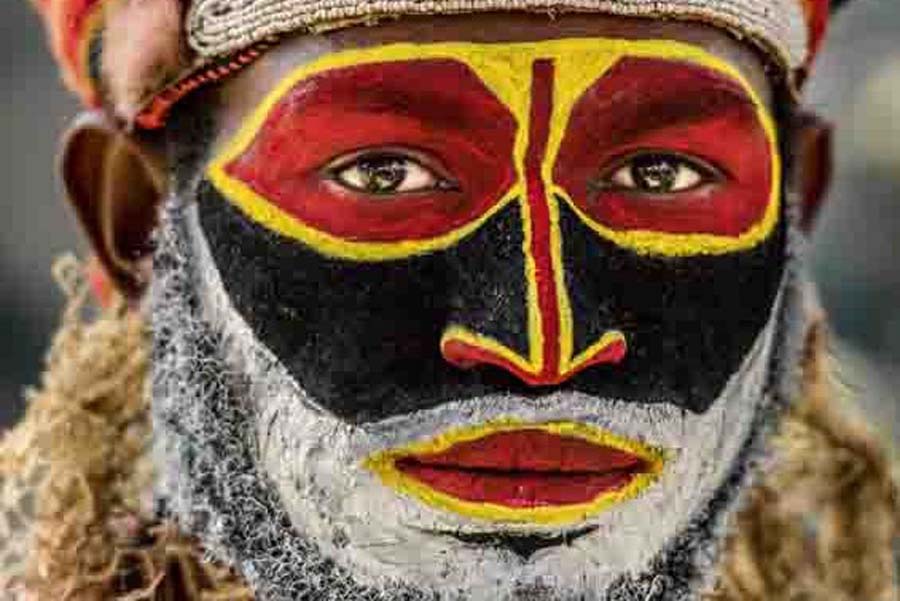My last post – The Dangerous Ape – expressed the hope that we (humans) could become adults, and that involves “embracing reality” by looking in the mirror and seeing our gifts and our gold, while simultaneously owning and taking responsibility for our shadows… and neither avoiding nor denying any of that. My hope is also that, starting there, we can focus on what’s truly important — developing those practices and ways of thinking… committing to the stories and teachings most likely to bring out the gold — what’s best in us — rather than submitting to that tempting dark shadow.
In that post I mentioned the first humans – distinct from our ape-like ancestors — appeared about 2.5 million years ago and from there spread across the planet in small hunting and gathering bands — humanity’s universal condition until the first appearance of civilization 5000-6000 years ago (4000 – 3000 B.C). Today, civilization is the outer condition — except in rare areas and instances — of virtually all humans on the planet. But there are great differences of opinion — in terms of civilized or indigenous — as to where lies the shadow and where lies the gold? I want to begin to speak about that here…
Commenting on the civilized and indigenous worlds, I assume that everyone reading this is part of the civilized world — if you are on a computer or smart phone right now, you are in, and part of, the civilized world, and most of “us” have assumptions, myths, or preconceptions about indigenous people. Some, generally labeled “right of center,” see the indigenous world as primitive and un- or under-developed, while those labeled “left of center,” see indigenous people as noble, uncorrupted, in some ways morally superior, and more in touch with nature and the environment.

I think both points of view have huge blind spots, but “left of center” is mostly where I’ve been camped out, and – living in Vermont — I virtually never meet anyone outside of it, so most people I’m familiar with think of indigenous people as…
- Naturally and morally superior – we think that being less corrupted by civilization is to be more connected to our innate goodness, and that’s essential to living a good and fulfilling life.
- More connected to nature and the environment, (and therefore) having a wisdom that civilized people have lost (and that the modern world needs if they are to avoid exterminating themselves.)
- More peaceful, kind, and better able to live in harmony with the environment and all living beings.
All three assumptions are questionable. In the 17th and 18th century, these points of view were part of the myth of the “Noble Savage,” itself a reaction to point of view that the natural state was short, brutish, and a war of all against all, an opinion that justified a strong central government – in many cases a monarchy — with laws to control and prevent the chaos.

In my previous post, I recounted how humans are descended from chimpanzees, and chimpanzees — when encountering a male chimp from another band who wandered into their territory — would attack and tear him limb from limb.
There is a story often told that when Columbus first arrived in the West Indies, he encountered the Arawak or Taino people. In his diary he spoke about how kind, friendly, good-natured and peaceful they were… followed by the comment, “they’d make good slaves.” This story or data point, feeds into the “Noble Savage — indigenous people are good, civilized or colonial people are bad” narrative.
But while Columbus’s diary probably says a lot about who Columbus was, it really says nothing about indigenous people generally. Columbus happened to encounter the Arawaks because they had been driven north by the Caribe Indians — after whom the Caribbean is named — a warlike tribe who would prey on the Arawaks – who they’d kill and eat — as well as kidnapping their women, using them as sex slaves, to produce children, who were considered delicacies and eaten. This behavior – also of indigenous people — doesn’t bring up the image of noble savages… but it does sound like what our chimpanzee ancestors might do to an outsider.

As to the belief that indigenous people were somehow natural environmentalists, my previous post mentioned how the introduction of Homo sapiens into North and South America resulted in one of the biggest and fastest ecological disasters to ever hit the animal kingdom — 80% of the families of large mammals being wiped out within 2000 years.
This likely wasn’t on purpose. There are many strategies by which species survive. Some can take flight quickly; some are camouflaged and blend in. Rabbits are fast, shifty, and multiply rapidly… a single female can produce over 80 offspring in a year — they survive by numbers. Large mammals – like the Mammoths, Mastodons, Ground Sloths, Short-faced Bears, of the Americas — have a much longer gestation cycle with many fewer offspring, but their enormous size makes them almost immune to predators, and a great many had few (or no) predators until humans arrived. A small band of humans — with lifespans of perhaps 30 years, and perhaps killing a few enormous creatures each year — would hardly notice a slow decline of numbers. To be able to see the long view and realize what was happening would require some form of record keeping… and that only came with civilization.
(To be continued… )


Leave a Reply